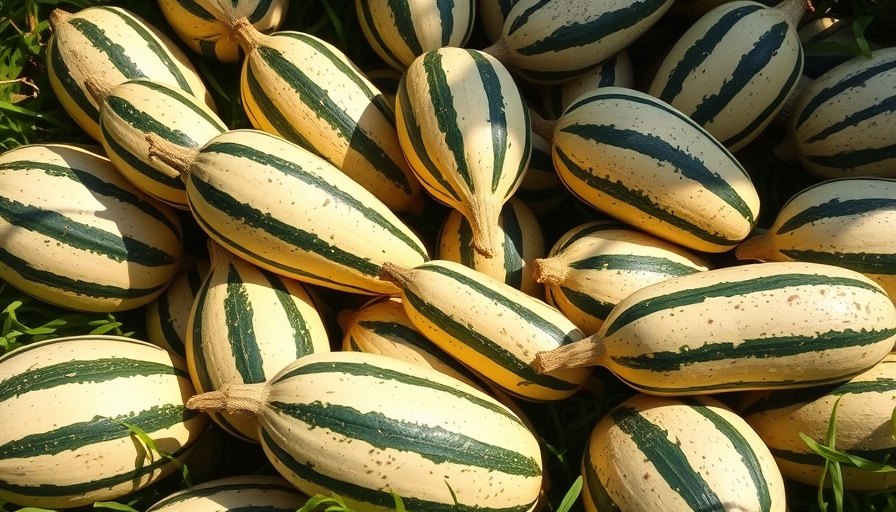
Growing Cushaw Squash: An Introduction
If you’ve ever dreamt about oversized, unique vegetables thriving in your garden, cushaw squash is your answer. These impressive squashes, known scientifically as Cucurbita argyrosperma, not only look stunning with their large, crooknecked forms but also offer rich flavors and culinary versatility. Native to Central America and historically significant to Native American cultures, the cushaw squash is a fantastic addition to your vegetable garden.
The Appeal of Cushaw Squash
With weights ranging from 10 to 20 pounds and lengths of up to 18 inches, cushaw squash stands out in any garden space. The flesh is a vibrant yellow to orange, being both meaty and moist, making it perfect for a variety of dishes from casseroles to desserts. The best part? They can be harvested young or matured for winter storage, ensuring a continuous food supply throughout the season.
Optimal Growing Conditions
For those eager to start their cushaw squash journey, here’s what you need to know about cultivation:
- Soil Type: Cushaw squash flourishes in loamy, organically-rich, well-draining soil with a pH of 6.0-7.0.
- Sunlight: Ensure your plants receive full sun for optimal growth.
- Spacing: Place your seeds 3-4 feet apart to allow ample room for sprawling vines.
- Watering: Maintain moderate water levels, especially during dry spells.
- Time to Maturity: Expect a growth period of 90-120 days from sowing.
Cushaw Squash Cultivars to Consider
There are several desirable cultivars that you might explore. Their various sizes and shapes offer choices for every garden, ensuring that your harvest not only nourishes you but also brings joy through their unique appearances. When selecting, you might consider heirloom varieties, which are often more flavorful and adapted to local climates, embodying the spirit of tradition in your garden.
Pest and Disease Management
Creating a bountiful harvest involves vigilance against pests. Cushaw squash can be prone to pests such as squash bugs and aphids. Utilizing pest-resistant plants nearby or implementing companion planting strategies can mitigate these issues effectively. Consider planting marigolds and nasturtiums nearby to repel harmful insects while attracting beneficial pollinators.
Harvesting and Preservation Techniques
Timing is key when it comes to harvesting cushaw squash. Aim for a harvest when the skin becomes hard and the fruit reaches its full size. You can slice the squash for immediate use or store it in a cool, dry place for later. For preservation, consider methods like blanching and freezing if the squash is in abundance.
Delicious Ways to Use Cushaw Squash
Once you’ve grown and harvested cushaw squash, the culinary world awaits! From savory dishes like cushaw fritters to sweet options including pies and muffins, the versatility is unmatched. Think outside the box: cushaw can be roasted, pureed, or used in soups, offering numerous adaptations based on seasonal trends.
The Emotional Connection to Gardening
As homeowners, DIY enthusiasts, and health-conscious individuals, nurturing plants like cushaw squash can serve as a profound connection to nature. Growing your own food not only provides nourishment but instills a sense of accomplishment and self-sufficiency. The experience fosters community connections and reminds us of the impact we can make when we cultivate our gardens.
In light of these insights, it’s clear that adding cushaw squash to your garden will enrich your culinary repertoire while advancing your self-sufficiency goals. Dive into the rewarding world of gardening and embrace the journey of growing your food!
 Add Row
Add Row  Add
Add 




 Add Row
Add Row  Add
Add 

Write A Comment